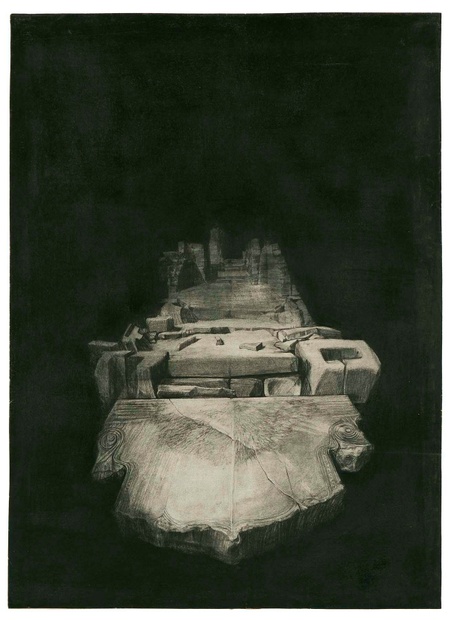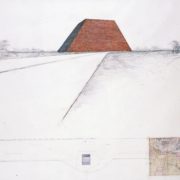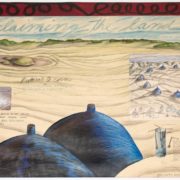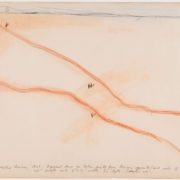“Dream Monuments: Drawing in the 1960s and 1970s” at the Menil Drawing Institute





“Dream Monuments: Drawing in the 1960s and 1970s” at the Menil Drawing Institute
“Dream Monuments: Drawing in the 1960s and 1970s” at the Menil Drawing Institute
“Dream Monuments: Drawing in the 1960s and 1970s” at the Menil Drawing Institute
“Dream Monuments: Drawing in the 1960s and 1970s” at the Menil Drawing Institute
Marta Minujín, “Statue of Liberty Lying Down II (With People Walking Through It) [Estatua de la Libertad acostada II (con público que la recorre)],” 1979. Ink on vellum, 34 1/2 × 45 in. (87.6 × 114.3 cm). Private Collection. Courtesy of Henrique Faria, New York. © Marta Minujín. Photo: Arturo Sanchez
September 19, 2021 is the last day to see “Dream Monuments: Drawing in the 1960s and 1970s” at the Menil Drawing Institute. Rebecca Rabinow, director of the Menil Collection, said this about the show: “Drawing is a space for dreaming, allowing artists to explore both the possible and the impossible. As such, ‘Dream Monuments’ addresses how artists have radically transformed the concept of a monument, moving beyond traditional ideas of commemorative forms or historical markers.”
In other words, the exhibition’s drawings knock the conventional idea of a monument on its ear.
In the late 1960s, Dominique and John de Menil began planning an exhibition of artworks that stretched the definition of a monument. As their ideas mutated, the project’s scope changed and evolved. It’s title “Dream Monuments” opened room for visionary or fantastical forms, easily expressed on paper, but impossible to build. The de Menils imagined a gallery display, with drawings, photographs and small-scale models of monuments, and at the same time, imagined large-scale, site-specific sculptures for Houston’s parks and public spaces. They made studio visits in New York to rope in artists, went begging for corporate underwriting, and discussed the project traveling. Artists submitted proposals for “Dream Monuments.” The project never panned-out. By 1972 it had fizzled.
Until, Menil Drawing Institute assistant curator Kelly Montana and guest curator Erica DiBenedetto resurrected it. Sort of. A plausible incarnation, that is. The curators organized an exhibition of the drawings submitted for the original “Dream Monuments” project, never before displayed together. And included drawings by other artists who in the 1960s and 70s explored alternative ways of representing monuments and monumentality.
Here’s one example. Beverly Buchanan challenged the definition of a monument as grand and permanent. She made drawings of buildings that appeared demolished, and structures that looked like ruins. She built small concrete block-like sculptures that allude to decay.
It’s fascinating to remember the original show was galvanized by new-fangled developments in art. The post-modern era brought radical changes in the definitions of art and art materials. At the time the de Menils planned their project, they were acutely aware of how far art’s meaning had stretched. Art now included an artist photographing himself being shot, or lewdly manipulating his body, post-minimalist style. Art likewise expanded to manipulating patches of earth. The show has drawings associated with earthworks or “land-art.”
Other drawings cite environmental and gender concerns, such as Mary Beth Edelson’s illustration of monumental female breasts covering an expanse of land.
Correspondence, notes, and invoices in the museum’s archives helped the curators track the de Menil’s efforts to organize the original project. It’s fun to imagine the private reactions of the coots at Texaco or Gulf Oil when John de Menil hit them up to underwrite Christo’s proposal to build a “mastaba,” an ancient Egyptian funerary form, but made from stacked oil drums, along a Texas highway. “That sombitch is out of his mind.”
There is a breathtaking drawing of a pyramid by Agnes Denes. Rendered with silver ink on vellum, this thing is 192 inches long. Reading about Denes gave me a headache because the inspiration for her art is extremely complex. She has been compared to Leonardo, for the unfathomable skill and cerebral concepts that underly her art, such as philosophy and mathematics.
Through September 19, 2021.
https://www.menil.org/






























